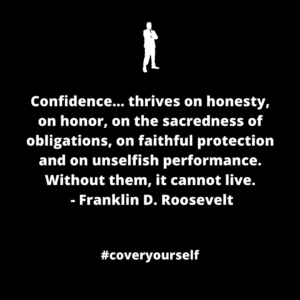Thursday, March 1, 2018
Term versus Perm: The Great Insurance Debate
On Monday I discussed some common myths surrounding life insurance. I believe that our society is dangerously underinsured in terms of life insurance. As mentioned, I believe everyone should have some form of coverage, it just matters what kind and how much. To determine how much coverage you need, a simple set of questions will do. Things like debts, obligations, income and future goals all come into play. To find the right product, however, a little more digging must be done. The two most popular life insurance products are term life and whole life insurance. Debates across the financial world have taken place about the merits of both. One hotly discussed topic is the “Buy Term and Invest the Rest” concept. While the logical conclusion would be to buy cheap term insurance and invest the rest, it doesn’t necessarily mean you have made the right choice. In today’s post, I will discuss both term and whole life insurance and show the merits of both. When purchasing life insurance, you want to make an informed decision so getting the right information is key.
Term Life Insurance
The most basic form of life insurance that exists is term life insurance. It is widely popular and with good reason. Term Life Insurance is effective, affordable and dynamic. The nature of term insurance is temporary. It covers a temporary need. This temporary need is usually that of a debt or income replacement. If two or more people are attached to a debt, it makes sense for them to have insurance to back them in case one of them dies before the debt is paid. Term insurance has an end date. Terms range from 5-25 years but usually are either 10 or 20 years. The timeline of the term is regarding the premium paid. When you purchase 10-year term, you are locking in the premium for those 10 years. The same goes for a 20-year term or any other length of term insurance. Once the term is over, the premium jumps because you are now older than before. At that point, you more than likely do not need the coverage anymore and can choose to let it lapse or continue for another term at a higher rate.
Who is it suited for?
Term Life Insurance is most suited for people who have not built up enough capital to cover the loss of life. This is more than likely younger people with debt obligations. This also includes people who have children where income replacement and future goals come into play. The death of someone prematurely can be devastating to their family’s financial plan. Term insurance covers that gap until such a time where the main obligations are settled. Term insurance is therefore relatively cheap because the likelihood of a person dying while they are young is far less. This makes it a very affordable option for young families looking to bridge the gap of earnings during their working years. It is also a nice option for those who cannot afford the cost of permanent coverage.
Who is it not suited for?
Term insurance is not ideally suited for people who do not have a large obligation to anyone else. If you are single with no debt, more than likely term insurance would not fit your situation. Also, you might have enough coverage through your place of employment. One side note is to consider that you will not always work where you work, so individual coverage should be obtained eventually. Term insurance can also be hard to get for people with very poor health. In that case, your coverage amount might be limited.
5 Must Have’s for Family Financial Planning – Budget Boss

Permanent Insurance
Permanent insurance, or whole life insurance is just what the name says it is. It lasts until the day you die, whenever that may be. While term insurance locks in the premium for the term, whole life insurance locks in the premium for the rest of your life. One key difference between whole life and term insurance is that whole life insurance has an investment component to it that grows over time. This means that the amount you have in coverage will eventually be more, which is an appealing characteristic. Because of this attribute, whole life coverage is more expensive than term insurance. Part of your premium goes to pay for the insurance component, the other part of your premium goes towards the investment part. Eventually, the investment part of the product will overtake the insurance part in value. At this time, you will have a policy that generates solid guaranteed returns. It is truly a “buy and hold” form of insurance.
Who is it suited for?
Whole life insurance is best suited for certain individuals. These include those wishing to cover final expenses. Also, people who have outgrown the need for temporary insurance because their obligations have shrunk. This includes parents whose children have left the home and have a paid off mortgage. Single individuals needing only a small amount of insurance also fall into the category of whole life insurance as well. Another type of person who whole life is suited for is one who is wishing to relieve their tax burden upon death. When you die, your estate is taxed. This can include any assets that don’t roll over to a spouse such as investments, property, and cash. Insurance lessens the taxable burden when you die so it is ideally suited for those wishing to leave money to the next generation.
Who is it not suited for?
Whole life insurance may not be in the budget for some people. If you need a large about of coverage, but at a cheaper price, then whole life insurance is not for you. It is also not suitable for those who do not have a permanent need, meaning those who do not need their final expenses covered. This could include those who are self-insured or others who have pre-paid for their burial. For many, cheap term insurance is sufficient for their need and permanent insurance takes a back seat.
Life insurance: Is term life always enough? – Money Sense
Conclusion
Ideally, most people would have a combination of both forms of insurance. Term insurance can cover the larger need when younger and whole life can grow over time to cover the permanent need upon death, whenever that may be. The “Buy Term and Invest the Rest,” concept falls short in some aspects. Firstly it doesn’t address the permanent need. Secondly, it assumes you will, in fact, invest the rest. An easy way to look at whole life insurance is that it is a great place to put your money once you have maxed out all your other tax-advantaged vehicles. There is no definite solution for everyone, so your own situation must be analyzed in order to find the right product and right amount of coverage. Finding the right coverage that fits into your budget is the key to life insurance. Being overinsured can hurt your monthly cash flow. Being underinsured can leave you and your loved ones vulnerable.
Thanks for tuning today as Insurance Week continues at Budget Boss. Don’t forget to join us tomorrow as we wrap up the week. If you would like to analyze your life insurance needs, please contact me at joe@budgetboss.ca. Have a great day Bosses!
“Confidence… thrives on honesty, on honor, on the sacredness of obligations, on faithful protection and on unselfish performance. Without them, it cannot live.” – Franklin D. Roosevelt

Email – joe@budgetboss.ca
Follow Budget Boss on – Facebook LinkedIn Twitter Instagram Pinterest Quora

